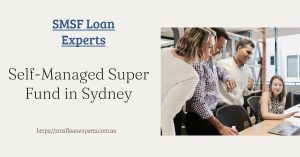Some Benefits of Investing in a Self Managed Super Fund
SMSF is an attractive investment option for Australian savers. It offers a range of tax and investment benefits and can help you to reduce your reliance on the age pension, as well as provide high returns in the long term. There are many benefits of investing in this type of fund which include choice, control, and flexibility.
- With a self-managed super fund, your withdrawals are treated as income but those contributions made to the fund are treated as capital gains (or losses) and therefore are not taxed on withdrawal.
- The other advantage is that you can make your own investment decision without risk of losing money like when you invest in a bank or building society.
- A Self-Managed Super Fund is Low Cost: The report found that a self-managed super fund compared with an average range of other types of investments such as a balanced or managed fund to be around 50% cheaper.
- A Self-Managed Super Fund can Be Flexible: The investment options in the self-managed super fund are flexible and can be changed at any time. Investors can change the mix between the different investments available to suit their personal needs and goals
- A Self Managed Super Fund Has an Investment Plan: A self-managed super fund offers individuals an investment plan which usually consists of monthly contributions.
- In an SMSF, the fund’s manager offers comprehensive advice and support.
How to Choose the Right Investment Style for Your Account
Investment style refers to the way an investor manages their investments. However, there are many investment styles that you can choose from. One of these is trend following, which is a style that implies investors buy assets in response to market trends.
There are some important steps that you need to take before you consider making any financial type of investment. One of the most important is knowing your risk tolerance, which refers to how comfortable are you with the idea of losing money in a given investment. If you have a high-risk tolerance and know for sure that you will be able to recover from any losses, then it might be wise for you to invest more aggressively in a shorter time frame. For people with lower risk tolerance, it might make more sense for them to invest their money over a longer period of time in order to mitigate the potential risks.
The best investment style for almost most people would be value investing, which means buying assets at an affordable price with a high expected profit in the future, and long-term investing, which means holding your investments for lengthy periods of time with low risk and low volatility in return.
Tips on How to Structure Your SMSF Investment Strategy
The SMSF investment strategy comes with its own unique set of challenges as well as opportunities to optimize. If an individual wants to build wealth and get the most out of their money, they need to keep track of their investments and how much is in each investment vehicle. If you follow these seven tips, you will find yourself successful in investing and making the most out of your money.
- Pick a conservative portfolio with low risk.
- Use diversification within the portfolio.
- Check your portfolio performance on a regular basis.
- Make sure that you have plenty of cash on hand.
- Know when you should sell assets and when you should hold off until more time.
- Be patient and take a step back to reassess your investment strategy periodically.
- Avoid getting caught up in the market hype cycle.
- Focus on investing for the long term.



